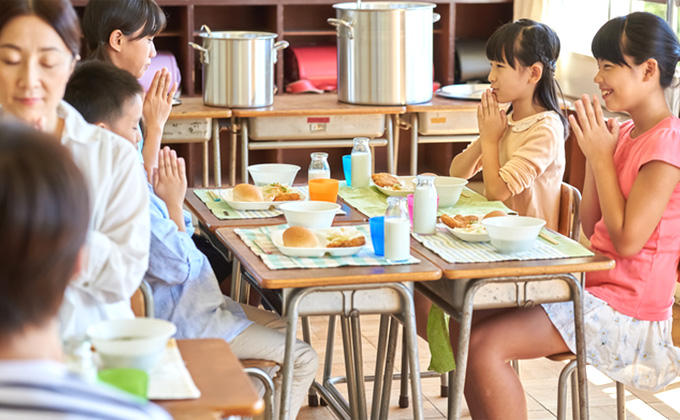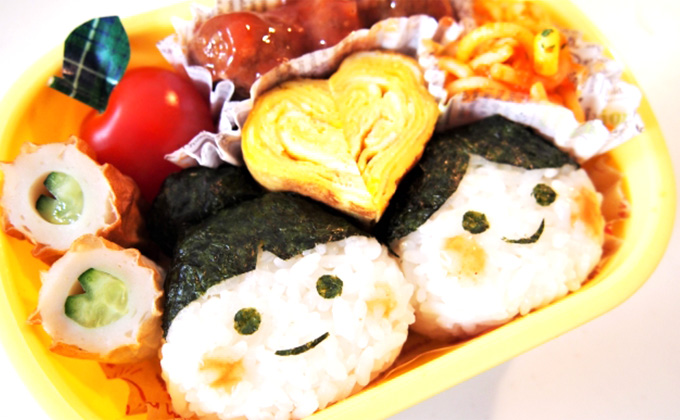TRG Info and Advice
Food as it was Meant to Be
An Entire Food Culture
From the time they are able to sit up and put their hands together, Japanese children are taught to say itadakimasu, even before a snack. Sitting down at a table and eating a specified amount of food (e.g. not standing in the kitchen eating chips out of a bag) are also strongly encouraged behaviors. Snack time is at 10 am (mostly for preschoolers and carpenters) and 3 pm, and considered a crucial part of children’s daily nutrition. Fruit, homemade sweets, steamed sweet potatoes, and even rice balls with seaweed are touted as optimal snack foods in Japan.
Balance, too, is especially revered when it comes to food. Nutrition is taken into account, of course, but so are color, portion-size and the arrangement of dishes. How it looks is just as important as how it tastes and Japanese parents make considerable efforts to tempt their children with apples cut like little rabbits, rice balls with funny faces made out of seaweed and heart shaped omelets. This is in strong contrast to the American ideal of all-you-can-eat, as cheaply as possible. Heaping platters of fries, steaks and pork-chops that take up most of the plate, the obligatory wedge of orange or mushy tomato off to the side, and ice-burg lettuce slathered in Range dressing to make it palatable must look utterly uncouth to many Japanese people.
An appreciation for the bounty of each season is also taught in Japan. Many homes, especially in the countryside, have gardens that are active nearly year round, so children have a chance to see what things are specific to the time of year. Primary school students in the lower grades often plant veggie patches outside the classroom door, and are encouraged to cook and eat their efforts. Japanese students learn how to cook the most basic of Japanese menus at the end of elementary school: miso soup, boiled greens, and rice. Growing rice in the upper-grades is part of the national curriculum and students participate in everything from planting to harvest, sometimes even becoming distributors and selling their rice with original packaging!
Some say the use of chopsticks encourages smaller bites, giving the stomach time to register feeling full. Simply attending to the food, focusing on chewing, learning about the source and history of various dishes, is a vastly different approach to school lunch. Even preschools have dieticians who plan each lunch, and pickiness is frowned upon as children are taught to eat a balanced and “colorful” meal.
Reverse Culture Shock
Do these different styles of school lunch affect students’ health in the US and Japan? Many say they do. Compare the rates of childhood obesity for these two countries. Whereas Japan’s has doubled over 25 years because of an initial uptake in the 1970s, it has since actually gone down among school-aged children. Meanwhile, the US’s has tripled during the same time period, with no sign of abatement. Many consider Japanese school lunches the common denominator, pointing to a rise in obesity after the age of 15 when most students in Japan attend high school and start bringing their lunches from home, or begin buying them from vendors and convenience stores.
Many modern parents in Japan have fought to keep school lunches not only nutritious and educational, but something their kids look forward to everyday; another reason to get up and go to school in morning. It provides not only shokuiku, but a pleasant socializing experience.
This year, if and when we go, I’m planning a little reverse culture shock. I’ll photograph and record a Japanese school lunch, from service to clean-up. Hopefully, one of my nieces’ or my nephew’s teachers will let me into the classroom for a little presentation. Maybe we could even make onigiri and learn to say “itadakimasu” and “gochisousamadeshita.”







